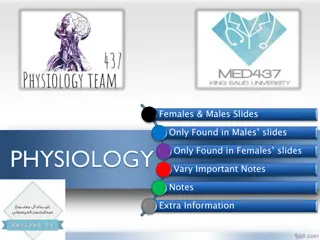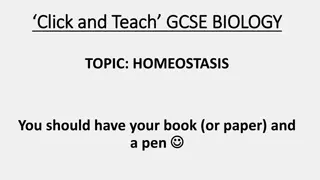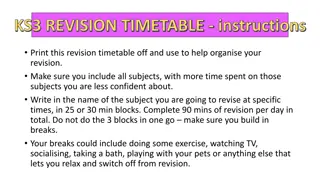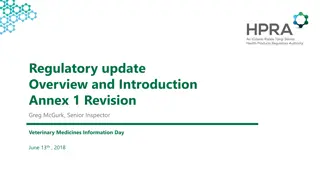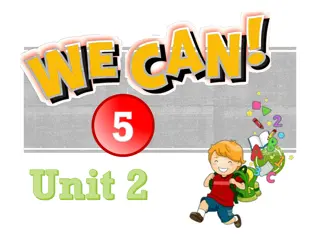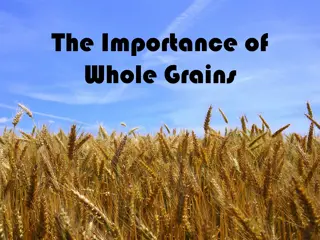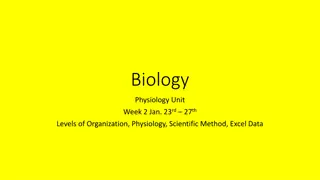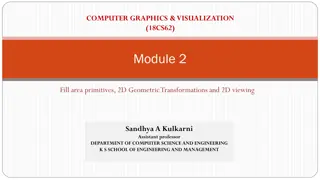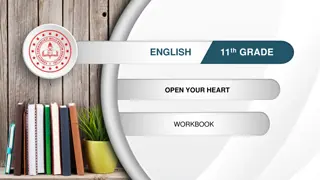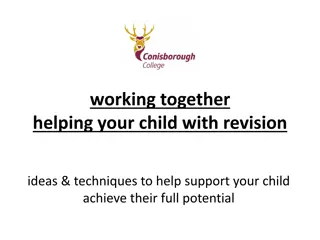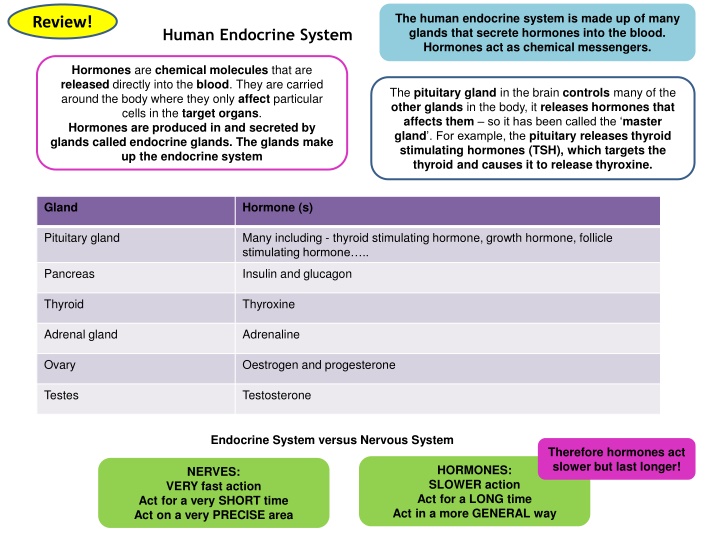
Human Endocrine System and Blood Glucose Regulation
Explore the complexities of the human endocrine system and how hormones regulate processes in the body. Learn about the role of the pancreas in controlling blood glucose levels through insulin and glucagon. Understand diabetes and its impact on blood sugar levels.
Download Presentation

Please find below an Image/Link to download the presentation.
The content on the website is provided AS IS for your information and personal use only. It may not be sold, licensed, or shared on other websites without obtaining consent from the author. If you encounter any issues during the download, it is possible that the publisher has removed the file from their server.
You are allowed to download the files provided on this website for personal or commercial use, subject to the condition that they are used lawfully. All files are the property of their respective owners.
The content on the website is provided AS IS for your information and personal use only. It may not be sold, licensed, or shared on other websites without obtaining consent from the author.
E N D
Presentation Transcript
The human endocrine system is made up of many glands that secrete hormones into the blood. Hormones act as chemical messengers. Review! Human Endocrine System Hormones are chemical molecules that are released directly into the blood. They are carried around the body where they only affect particular cells in the target organs. Hormones are produced in and secreted by glands called endocrine glands. The glands make up the endocrine system The pituitary gland in the brain controls many of the other glands in the body, it releases hormones that affects them so it has been called the master gland . For example, the pituitary releases thyroid stimulating hormones (TSH), which targets the thyroid and causes it to release thyroxine. Gland Hormone (s) Pituitary gland Many including - thyroid stimulating hormone, growth hormone, follicle stimulating hormone .. Pancreas Insulin and glucagon Thyroid Thyroxine Adrenal gland Adrenaline Ovary Oestrogen and progesterone Testes Testosterone Endocrine System versus Nervous System Therefore hormones act slower but last longer! HORMONES: SLOWER action Act for a LONG time Act in a more GENERAL way NERVES: VERY fast action Act for a very SHORT time Act on a very PRECISE area
More Blood glucose concentration is monitored and controlled by the pancreas, as blood passes through it. Control of Blood Glucose Concentration Review! Homeostasis Respiration also removes glucose from the blood. Exercising increases respiration. Another example of negative feedback Detected by the Pancreas, releases Insulin Insulin and Glucagon Control Blood Glucose Level Stimulates glucose uptake by cells, blood glucose reduced Blood glucose increases after eating When carbohydrates are eaten and digested, glucose enters the blood. The typical metabolism of cells removes glucose from the blood (such as respiration). Exercise increases respiration and therefore removes much more glucose from the blood. Excess glucose can be stored as glycogen in the liver and muscles. The level of glucose in the blood must be kept at a set level, changes are monitored and controlled by the pancreas using insulin and glucagon (hormones), an example of negative feedback. Normal blood glucose levels Glucose released into blood by liver, levels return Blood glucose level drops Detected by the Pancreas, releases Glucagon Insulin Glucagon The pancreas releases insulin (a hormone) into the blood if blood glucose becomes too high, such as after a meal. Insulin causes all cells in the body to take up glucose. In the liver and muscle cells, excess glucose is converted into glycogen for energy storage. This brings the concentration of glucose in the blood back to normal levels The pancreas releases glucagon (a hormone) into the blood if blood glucose becomes too low, such as many hours after eating. Glucagon targets the liver and muscle cells causing them to break down glycogen into glucose and release it into the blood. This increases the concentration of blood glucose back to the normal levels.
Normal blood sugar level = 90mg/dl Diabetes Review! Diabetes is a condition that affects your ability to control your own blood sugar level. Rising to 135 mg/dl straight after a meal Hyperglycaemia when blood glucose levels are too high. Can cause kidney damage or damage to the eyes. Hypoglycaemia when blood sugar levels are too low causes shaking, dizziness, coma. For those with diabetes the blood glucose remains high unless treated. Type 1 Diabetes Type 2 Diabetes Caused when pancreas does not produce enough insulin. Caused by lifestyle factors, e.g. obesity and poor diet. The pancreas still produces insulin but the body does not respond to it is the correct way. Often identified in children, thought to be genetic. The treatment is to follow a carbohydrate controlled diet and exercise regularly. The treatment is to inject insulin several times a day.
Review! Maintaining Water and Nitrogen Balance in the Body The levels of water and nitrogen ions are controlled by the kidneys Osmotic Changes BUT water is also lost from the lungs during exhalation. Water, ions and urea are also lost through sweat. The kidneys have no control over this. Osmosis is the diffusion of water from a more dilute solution to a more concentrated one. If the fluids surrounding the cells (blood or tissue fluid) is too concentrated, then water will move out of the cells they could shrivel or crenate and not be able to function. If the fluids surrounding the cells is too dilute, water could move into the cells causing them to burst and not able to function. Ultrafiltration The Kidneys Act as Filter The kidneys make urine by taking waste products and unwanted substances out of your blood. The blood is filtered through a ball of blood capillaries in the in the kidneys called the glomerulus. The arteriole taking the blood to the glomerulus is larger than the arteriole taking the blood away from the glomerulus, which means the blood in the glomerulus is under pressure, forcing small molecules out and into another area of the kidney(the Bowman s capsule). This is called ultrafiltration. Water, ions and urea flow from Bowman s capsule into the nephron (a section of the kidney) where they move into the bladder and removed as urine. Digestion of Proteins Excess proteins in the body are digested resulting in excess amino acids. They are sent to the liver to be deaminated (broken down) into ammonia. Ammonia (toxic) is converted to urea, this travels via the blood to the kidneys and excreted in urine. Some glucose, ions and water are reabsorbed Some molecules that the body requires are reabsorbed some of the glucose, ions and water are reabsorbed but only as much as is required. Excess Amino Acids (from digested protein) Ammonia Large molecules such as protein remain in the blood, they are too large to move across the capillaries. Protein stays in blood Urea Urine
Review! Controlling Urine Concentration - ADH ADH is released into the bloodstream by the pituitary gland. A hormone called anti-diuretic hormone (ADH) controls the concentration of urine. It acts on the kidneys to control the amount of water lost. A receptor in the brain detects that the water content is too high. A receptor in the brain detects that the water content is too low. The coordination centre in the brain receives the information and coordinates a response. The pituitary gland releases more ADH, so more water is reabsorbed from the kidney tubules. (makes tubules more permeable) The pituitary gland releases less ADH, so less water is reabsorbed from the kidney tubules. (makes tubules less permeable) Another example of negative feedback. If the water content gets too high or two low, it is then brought back to optimum levels. ADH acts to make the kidney tubules more permeable to water.
Kidney Failure Review! There are two treatments for Kidney Failure Dialysis and Transplant Kidneys Remove Waste If the kidneys fail, waste substances can build up in the blood. The body no longer has the ability to control the levels of ions and water in the body which leads to death. People with kidney failure can be kept alive by having dialysis. A dialysis machine can filter the blood, removing excess ions, excess water and urea. There are advantages and disadvantages Cure: Kidney Transplant Dialysis: How Dialysis Works Living donors are possible, one out of two kidneys are donated. People who die suddenly may carry a donor card, this allows their organs to be used. There is a risk of rejection by the immune system, with donor kidneys. The patient can take immunosuppressant drugs to help prevent, but it can still happen. A transplant is cheaper in the long run (than dialysis, it also stops the hours spent on dialysis, but the waiting list is long and there is a risk of rejection. Waste needs to be removed regularly and dissolved substances in the blood need to be kept at normal levels, therefore dialysis must be done regularly several times per week and it takes around 5 hours. A person needs to have tubes attached to a needle in their arm. The blood moves through a dialysis machine, the person s blood flows between partially permeable membranes, surrounded by dialysis fluid. Just like the kidney the membranes are permeable to ions and waste substances, but not larger molecules like protein. The dialysis fluid has the same concentration of dissolved ions and glucose as healthy blood therefore the same level of ions and glucose will remain in the blood. Waste products and excess ions and water diffuse across the membrane. The concentration of urea (a waste product), and an excess of ions, is higher in the blood compared to the dialysis fluid so this moves down a concentration gradient by diffusion. Dialysis is not a pleasant experience, it is also expensive but gives a patient with kidney failure extra time to find a donor. Dialysis comes with risk of clots and infections. Dialysis Blood flows between partially permeable membranes, surrounded by dialysis fluid Urea, plus excess ions and water diffuse across membrane Dialysis machine Blood Dialysis machines filter the blood.
Human reproduction involves the interaction of many hormones Review! Hormones in Human Reproduction Hormones During Puberty The Menstrual Cycle Sex hormones are released in puberty, they trigger secondary sexual characteristics to develop. In females, at puberty, eggs begin to mature, one is released about every 28 days, called ovulation. The menstrual cycle lasts about 28 days and is controlled by four hormones; oestrogen, progesterone, FSH and LH. Hormone Effect Secreted by testes. During Puberty: Males develop pubic hair, chest and face hair, a more muscular body and voice deepens. Genitals develop and sperm is produced. Testosterone Secreted by ovaries. During puberty: Females develop wider hips, breasts, pubic hair and menstruation starts. Menstrual cycle: Causes repair of the lining of the uterus after menstruation. Stimulates the release of LH Inhibits the release of FSH Oestrogen Secreted by ovaries (by the remains of the follicle after ovulation). Maintains the uterus lining, when the level falls, the lining breaks down. Inhibits the release of LH and FSH. Progesterone Secreted by pituitary gland. Causes ova to mature in one of the ovaries (within a follicle). Stimulates ovaries to produce oestrogen. Follicle Stimulating Hormone FSH Then the cycle starts again Secreted by pituitary gland. Stimulates the release of an ovum at day 14 ovulation. Luteinising Hormone LH Approx. Day 14-28 the lining of the uterus is maintained Approx. Day 1-4 the uterus lining breaks down Approx. Day 14 an egg is released Approx. Day 4-14 the lining of the uterus builds up
Review! Interaction of Hormones in the Menstrual Cycle Thickening of uterus lining Stimulates release of egg day 14 Eggs mature Stimulates ovaries to secrete oestrogen. Pituitary gland releases FSH. Oestrogen Stimulates the pituitary gland to release LH. FSH -ve feedback, production slowed -ve feedback, production slowed LH -ve feedback, production slowed -ve feedback, production slowed Release of ovum causes large amounts of progesterone to be secreted by ovaries. Fall in progesterone leads to uterus lining breaking down and cycle restarts. REMEMBER Progesterone F O L P Maintains uterus lining
Contraception and Fertility Treatment Review! Fertility treatment can help infertility Contraception prevents pregnancy. Fertility Treatment A fertility drug containing the hormones FSH and LH, can be given to women who do not produce enough, to allow their eggs to mature and stimulate ovulation. Contraception Barrier Methods do not involve hormones, but instead prevent the sperm meeting the egg, including condoms and diaphragm. IVF There are surgical methods, sperm ducts (in the male) or oviducts (in the female) are cut and tied. If a woman cannot get pregnant using medication, she has the option to try IVF In vitro fertilisation. IVF is a type of fertilisation that happens outside of the body. Eggs are surgically removed from the mother and fertilised in a laboratory using the father s sperm. The fertilised eggs develop into embryos, and one or two placed into the woman s uterus. FSH and LH are given before egg collection to stimulate several eggs to mature at once (to collect for fertilisation). Natural methods, such as avoiding intercourse during the fertile part of the women s cycle are unreliable. Hormones can also be used to reduce fertility, they can prevent the release of an egg during the menstrual cycle. Combined oestrogen/progesterone pill to inhibit FSH, no eggs mature. Injection, skin patch, implants contain progesterone to inhibit maturation and release of eggs. Disadvantages Advantages Low success rate Can lead to multiple births (twins etc) this is higher risk It is physically and emotionally stressful Infertile couples can have their own child Abstaining from intercourse is the only way to be 100% sure that sperm and eggs do not meet.
Plants use hormones to coordinate and control growth, and respond to their environment Plant Hormones Review! Plant hormones make sure plants grow in the right direction. Plant Hormone Uses Auxin Plant Growth Hormone Auxins (plant, growth hormone) Weed killer broad leaved Rooting powder allows cuttings to root faster Growing medium in tissue culture plants grown from cells Controls growth of plant in response to light and gravity Controls growth near tips of shoots and roots Produced in the tips moves backwards to make cells elongate More growth in shoot Gibberellin (plant, growth hormone) Ends seed dormancy Promotes flowering Increase fruit size In a root the extra auxin inhibits growth Less growth in root Ethene (gas produced by plants) Controls the ripening of fruit during transport and storage. If the tip of the shoot is removed No auxin, shoot stops growing Phototropism plants responding to light. More auxin gathers on the side of the shoot that is in the shade. The cells here get longer, causing the shoot tip to bend towards the light. Geotropism plants responding to gravity. In the root auxin gathers on lower side BUT stops growth, cells on top grow faster, root bends downwards. In the shoot auxin gathers on lower side, these ells get longer, shoot bends upwards. Auxin gathers on the shady side
Negative feedback is a system that increases or decreases a stimulus back to a set point (optimum). Review! Thyroxine and Adrenaline Thyroxine levels are controlled by Negative Feedback Hormone levels can also controlled by negative feedback. A negative feedback control system responds, when conditions deviate from the ideal, they are returned back to the ideal. A negative feedback system keeps the amount of thyroxine in the blood at the right level Thyroxine Regulates Metabolism Thyroxine is made in the thyroid gland from iodine and amino acids. It controls the speed of the chemical reactions in the body at rest the basal metabolic rate. It also stimulates protein synthesis for growth and development Thyroxine is released in response to thyroid stimulating hormone (TSH) which is released from the pituitary gland. Blood thyroxine level 1. increase from normal detected 2. release of TSH inhibited 3. decrease from normal detected 4. TSH released again 2 1 3 Normal level 4 time When the level of thyroxine in the blood is higher than normal, TSH stops being secreted from the pituitary gland. This reduces the amount of thyroxine released from the thyroid gland, so the level in the blood falls back towards the normal. Adrenaline Fight or Flight Adrenaline is released by the adrenal glands (just above kidneys) The brain detects fear or stress and sends an impulse to the adrenal gland, they respond by secreting adrenaline Adrenaline has several effects to help prepare the body for fight or flight Increases the heart rate Increases the breathing rate Blood is redirected to muscles The liver is stimulated to break down glycogen into glucose Causes pupils to dilate Boosts oxygen and glucose F A F - Fight/Flight - Adrenaline G M T - Growth/ Metabolism (rate) - Thyroxine
Interpret and Explain Simple Diagrams of Negative Feedback Control Mastery Review! Hypothalamus Exam Question (3 marks) stimulates TRH The diagram shows how the level of thyroxine in the body is maintained by thyroid releasing hormone (TRH) and thyroid stimulating hormone (TSH). Anterior Pituitary inhibits TSH Use information from the diagram to explain how thyroxine levels are maintained. Thyroid Gland Thyroid hormones Target Cells In your answer include what happens when the levels get too HIGH, and too LOW Model Answer When the level of thyroxine in the blood is low, the hypothalamus releases TRH, this stimulates the anterior pituitary to release TSH, which stimulates the thyroid gland to release thyroxine. (1) TSH inhibits the hypothalamus producing TRH. (1) When the level of thyroxine is too high, it inhibits the hypothalamus producing TRH and the anterior pituitary producing TSH. (1)
The human endocrine system is made up of many glands that secrete . into the blood. Hormones act as chemical messengers. Do! Human Endocrine System Hormones are chemical molecules that are released directly into the .. . They are carried around the body where they only affect particular cells in the target .. . Hormones are produced in and secreted by glands called . glands. The glands make up the endocrine . . The .. gland in the brain controls many of the other glands in the body, it releases . that affects them so it has been called the . gland . For example, the pituitary releases thyroid stimulating hormones (TSH), which targets the thyroid and causes it to release .. . Gland Hormone (s) Many including - thyroid stimulating hormone, growth hormone, follicle stimulating hormone .. . .. Insulin and glucagon . Thyroxine .. Adrenaline Oestrogen and progesterone Testosterone Endocrine System versus Nervous System Therefore hormones act slower but last ..! HORMONES: SLOWER .. Act for a LONG Act in a more GENERAL .. NERVES: VERY fast Act for a very SHORT .. Act on a very PRECISE .
More Control of Blood Glucose Concentration Blood glucose concentration is monitored and controlled by the , as blood passes through it. Do! Homeostasis also removes glucose from the blood. . increases respiration. Another example of feedback Detected by the .. , releases .. Insulin and Glucagon Control Blood Glucose Level Stimulates glucose uptake by .. , blood glucose . Blood glucose . after eating When carbohydrates are eaten and ., glucose enters the blood. The typical of cells removes glucose from the blood (such as respiration). Exercise increases . and therefore removes much more glucose from the blood. Excess glucose can be stored as in the liver and muscles. The level of glucose in the blood must be kept at a set level, changes are monitored and controlled by the pancreas using . and glucagon (hormones), an example of negative feedback. Normal blood glucose levels . released into blood by liver, levels return Blood glucose level drops Detected by the Pancreas, releases . Insulin Glucagon The pancreas releases insulin (a hormone) into the blood if blood glucose becomes too ., such as after a meal. Insulin causes all cells in the body to take up ... In the liver and muscle cells, excess glucose is converted into .. for energy storage. This brings the concentration of glucose in the blood back to .. levels The pancreas releases glucagon (a hormone) into the blood if blood glucose becomes too , such as many hours after eating. Glucagon targets the liver and muscle cells causing them to break down .. into glucose and release it into the blood. This the concentration of blood glucose back to the normal levels.
Normal blood sugar level = 90mg/dl Diabetes Do! Diabetes is a condition that affects your ability to control your own blood . level. Rising to 135 mg/dl straight after a meal .. when blood glucose levels are too high. Can cause kidney damage or damage to the eyes. when blood sugar levels are too low causes shaking, dizziness, coma. For those with diabetes the blood glucose remains high unless treated. Caused when pancreas does not produce enough insulin. Type 1 Diabetes Type 2 Diabetes The treatment is to inject insulin several times a day. Caused by lifestyle factors, e.g. obesity and poor diet. Sort! Often identified in children, thought to be genetic. The treatment is to follow a carbohydrate controlled diet and exercise regularly. The pancreas still produces insulin but the body does not respond to it is the correct way.
Do! Maintaining Water and Nitrogen Balance in the Body The levels of water and nitrogen ions are controlled by the . Osmotic Changes BUT water is also lost from the lungs during .. . Water, ions and urea are also lost through . The kidneys have no control over this. Osmosis is the diffusion of water from a more . solution to a more . one. If the fluids surrounding the cells (blood or tissue fluid) is too concentrated, then water will move out of the cells they could shrivel or .. and not be able to function. If the fluids surrounding the cells is too dilute, water could move the cells causing them to and not able to function. Ultrafiltration The Kidneys Act as Filter The kidneys make urine by taking waste products and unwanted substances out of your blood. The blood is filtered through a ball of blood capillaries in the in the kidneys called the glomerulus. The arteriole taking the blood to the glomerulus is .. than the arteriole taking the blood away from the glomerulus, which means the blood in the glomerulus is under .. , forcing small molecules out and into another area of the kidney(the Bowman s capsule). This is called .. Water, ions and urea flow from Bowman s capsule into the nephron (a section of the kidney) where they move into the bladder and removed as ... Digestion of Proteins Excess . in the body are digested resulting in excess amino acids. They are sent to the liver to be . (broken down) into ammonia. Ammonia (toxic) is converted to .. , this travels via the blood to the kidneys and excreted in urine. Some glucose, ions and water are reabsorbed Some molecules that the body requires are reabsorbed some of the . , ions and . are reabsorbed but only as much as is required. Excess Amino Acids (from digested protein) Ammonia Large molecules such as .. remain in the blood, they are too large to move across the capillaries. .. stays in blood Urea
Do! Controlling Urine Concentration - ADH ADH is released into the bloodstream by the . gland. A hormone called anti-diuretic hormone (ADH) controls the . of urine. It acts on the .. to control the amount of . lost. A receptor in the brain detects that the water content is too high. A receptor in the brain detects that the water content is too low. The coordination centre in the brain receives the information and coordinates a ... The pituitary gland releases ADH, so .. water is reabsorbed from the kidney tubules. (makes tubules .. permeable) The pituitary gland releases ADH, so . water is reabsorbed from the kidney tubules. (makes tubules permeable) Another example of .. feedback. If the water content gets too high or two low, it is then brought back to optimum levels. ADH acts to make the kidney . more permeable to water.
Kidney Failure Do! There are two treatments for Kidney Failure Dialysis and Kidneys Remove Waste If the kidneys fail, .. substances can build up in the blood. The body no longer has the ability to control the levels of .. and water in the body which leads to death. People with kidney failure can be kept alive by having ... A dialysis machine can filter the blood, removing excess ions, excess water and ... There are advantages and disadvantages Dialysis: How Dialysis Works Cure: Kidney Transplant . needs to be removed regularly and dissolved substances in the blood need to be kept at normal levels, therefore dialysis must be done regularly several times per week and it takes around 5 hours. A person needs to have tubes attached to a . in their arm. The blood moves through a dialysis machine, the person s blood flows between partially . membranes, surrounded by .. fluid. Just like the kidney the membranes are permeable to and waste substances, but not larger molecules like .. . The dialysis fluid has the same concentration of dissolved ions and glucose as .. blood therefore the same level of ions and glucose will in the blood. Waste products and excess ions and diffuse across the membrane. The concentration of urea (a waste product), and an excess of ions, is higher in the blood compared to the dialysis fluid so this moves down a concentration gradient by .. . Dialysis is not a pleasant experience, it is also expensive but gives a patient with kidney failure extra to find a donor. Dialysis comes with risk of clots and . Dialysis donors are possible, one out of two kidneys are donated. People who die suddenly may carry a . card, this allows their organs to be used. There is a risk of by the immune system, with donor kidneys. The patient can take .. drugs to help prevent, but it can still happen. A transplant is cheaper in the long run (than dialysis, it also stops the hours spent on . , but the waiting list is . and there is a risk of .. . Blood flows between permeable membranes, surrounded by .. fluid Urea, plus excess ions and .. diffuse across membrane Dialysis machine Blood Dialysis machines the blood.
Human reproduction involves the interaction of many .. Do! Hormones in Human Reproduction Hormones During Puberty The Menstrual Cycle Sex hormones are released in , they trigger secondary sexual .. to develop. In females, at puberty, eggs begin to mature, one is released about every 28 days, called . The menstrual cycle lasts about 28 days and is controlled by four hormones; oestrogen, .., FSH and . Hormone Effect Testosterone Secreted by . During Puberty: Males develop pubic hair, chest and . hair, a more muscular body and voice . Genitals develop and is produced. Secreted by . . During puberty: Females develop wider , breasts, pubic hair and . starts. Menstrual cycle: Causes repair of the lining of the . after menstruation. Stimulates the release of LH Inhibits the release of .. Oestrogen Secreted by ovaries (by the remains of the .. after ovulation). Maintains the .. lining, when the level falls, the lining breaks down. Inhibits the release of and FSH. Progesterone Secreted by . gland. Causes ova to . in one of the ovaries (within a follicle). Stimulates ovaries to produce .. . Follicle Stimulating Hormone FSH Then the cycle .. again Secreted by . gland. Stimulates the release of an at day 14 ovulation. Luteinising Hormone LH Approx. Day 14-28 the lining of the uterus is . Approx. Day 1-4 the uterus lining down Approx. Day 14 an . is released Approx. Day 4-14 the lining of the uterus up
Interaction of Hormones in the Menstrual Cycle Do! -ve feedback, production slowed Eggs mature Pituitary gland releases FSH. Release of ovum causes large amounts of progesterone to be secreted by ovaries. FSH -ve feedback, production slowed Progesterone Maintains uterus lining Fall in progesterone leads to uterus lining breaking down and cycle restarts. Stimulates release of egg day 14 Thickening of uterus lining -ve feedback, production slowed Stimulates ovaries to secrete oestrogen. Stimulates the pituitary gland to release LH. -ve feedback, production slowed Oestrogen LH
Do! Contraception and Fertility Treatment Fertility treatment can help infertility Contraception prevents pregnancy. Fertility Treatment A fertility drug containing the hormones and LH, can be given to women who do not produce enough, to allow their eggs to mature and stimulate . . Contraception Barrier Methods do not involve ., but instead .. the sperm meeting the egg, including condoms and diaphragm. IVF There are surgical methods, sperm ducts (in the male) or (in the female) are cut and tied. If a woman cannot get pregnant using medication, she has the option to try IVF In vitro fertilisation. IVF is a type of fertilisation that happens .. of the body. Eggs are surgically removed from the mother and .. in a laboratory using the father s sperm. The fertilised eggs develop into , and one or two placed into the woman s uterus. FSH and .. are given before egg collection to stimulate several eggs to mature at once (to collect for fertilisation). Natural methods, such as avoiding intercourse during the . part of the women s cycle are unreliable. Hormones can also be used to reduce fertility, they can prevent the release of an during the menstrual cycle. Combined oestrogen/ .. pill to inhibit FSH, no eggs mature. Injection, skin patch, . contain progesterone to inhibit maturation and release of eggs. Disadvantages Advantages Low . rate Can lead to . births (twins etc) this is higher risk It is physically and emotionally . Infertile couples can have their own .. Abstaining from intercourse is the only way to be 100% sure that sperm and do not meet.
Do! Plants use .. to coordinate and control growth, and respond to their environment Plant Hormones Plant hormones make sure plants grow in the right .. Plant Hormone Uses Auxin Plant Growth Hormone Auxins (plant, growth hormone) Weed .. broad leaved Rooting powder allows .. to root faster Growing in tissue culture plants grown from cells Controls growth of plant in response to light and . Controls near tips of shoots and roots Produced in the tips moves backwards to make cells More growth in In a root the extra auxin . growth Less growth in . Gibberellin (plant, growth hormone) Ends seed Promotes Increase size Ethene (gas produced by plants) Controls the of fruit during transport and storage. If the tip of the shoot is removed No auxin, shoot . growing Phototropism plants responding to . More auxin gathers on the side of the shoot that is in the . . The cells here get longer, causing the shoot tip to bend towards the light. Geotropism plants responding to . In the root auxin gathers on lower side BUT stops growth, cells on top grow faster, root bends .. In the shoot auxin gathers on lower side, these ells get longer, shoot bends .. Auxin gathers on the .. side
Negative feedback is a system that increases or decreases a stimulus .. to a set point (optimum). Do! Thyroxine and Adrenaline Thyroxine levels are controlled by Negative Feedback Hormone levels can also controlled by feedback. A negative feedback control system responds, when conditions deviate from the ideal, they are back to the ideal. A negative feedback system keeps the amount of thyroxine in the blood at the right level Thyroxine Regulates Metabolism Thyroxine is made in the thyroid gland from and amino acids. It controls the speed of the chemical reactions in the body at rest the .. metabolic rate. It also stimulates .. synthesis for growth and development Thyroxine is released in response to thyroid hormone (TSH) which is released from the gland. Blood thyroxine level 1. . from normal detected 2. release of TSH ............. 3. .. from normal detected 4. .. released again 2 1 3 Normal level 4 time When the level of thyroxine in the blood is higher than normal, stops being secreted from the .. gland. This the amount of thyroxine released from the thyroid gland, so the level in the blood .. back towards the normal. Adrenaline Fight or Flight Adrenaline is released by the glands (just above kidneys) The brain detects . or stress and sends an to the adrenal gland, they respond by . adrenaline Adrenaline has several effects to help prepare the body for fight or flight Increases the . rate Increases the rate Blood is redirected to The liver is stimulated to break down .. into glucose Causes pupils to . Boosts oxygen and .. F A F - Fight/Flight - . G M T - Growth/ Metabolism (rate) -
Interpret and Explain Simple Diagrams of Negative Feedback Control Mastery Do! Hypothalamus Exam Question (3 marks) stimulates TRH The diagram shows how the level of thyroxine in the body is maintained by thyroid releasing hormone (TRH) and thyroid stimulating hormone (TSH). Anterior Pituitary inhibits TSH Use information from the diagram to explain how thyroxine levels are maintained. Thyroid Gland Thyroid hormones Target Cells In your answer include what happens when the levels get too HIGH, and too LOW Answer 3 points for 3 marks





